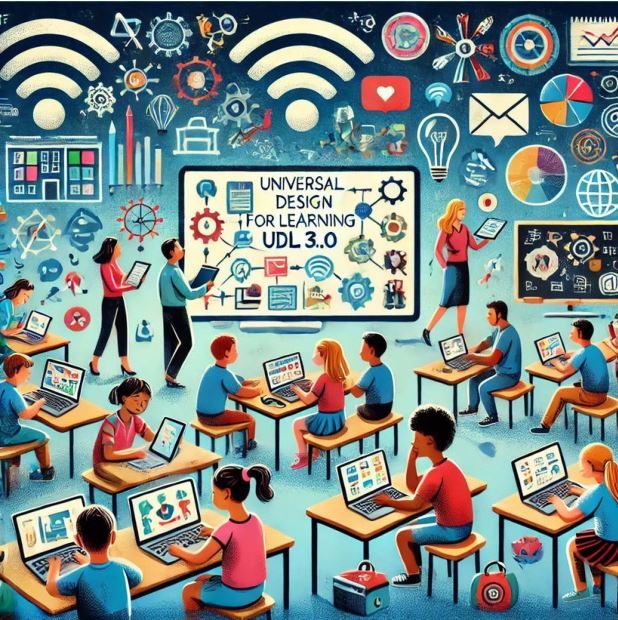The adoption of UDL 3.0 has many significant changes for students, educators, and parents. While there is too much to dive into in one article, I’d like to focus on the recognition of technology’s role in the new framework. Technology has a greater role in fostering inclusive and engaging learning environments and UDL 3.0 enhances the learning experiences while providing critical support to teachers and parents. This integration of technology into the UDL framework makes education more accessible, personalized, and engaging for everyone.
For students, UDL 3.0’s focus on technology offers a more personalized learning experience. Thanks to tools that adapt to each student’s needs, they can learn at their own pace and in a way that makes sense to them. This is especially helpful for those who might struggle with traditional methods, making sure they get the right level of support to succeed. With access to digital resources, students can explore subjects in ways that interest them, making learning more accessible and engaging. Examples: CK12 Flexi Homework Helper, Khanmigo Tutor for Learners
 Teachers can also benefit from this tech-savvy approach. With digital tools and platforms, they can present lessons in more creative ways, keeping students interested and engaged. Technology allows for lessons that go beyond textbooks, using videos, interactive simulations, and online discussions to bring topics to life. Technology can also give teachers real-time feedback on how students are doing, so they can tweak their lessons and provide extra help when it’s needed. This makes teaching more effective and ensures students don’t fall through the cracks. Example: Brisk Tools for Teachers
Teachers can also benefit from this tech-savvy approach. With digital tools and platforms, they can present lessons in more creative ways, keeping students interested and engaged. Technology allows for lessons that go beyond textbooks, using videos, interactive simulations, and online discussions to bring topics to life. Technology can also give teachers real-time feedback on how students are doing, so they can tweak their lessons and provide extra help when it’s needed. This makes teaching more effective and ensures students don’t fall through the cracks. Example: Brisk Tools for Teachers
Parents are also seeing the perks of UDL 3.0’s technology emphasis. Digital platforms make it easier for parents to keep track of their child’s progress, access resources, and be more involved in their education. This better communication between home and school helps parents support their kids’ learning and stay in the loop on what’s happening in the classroom. Plus, with more information at their fingertips, parents can have more meaningful conversations with teachers about their child’s needs. Examples: District SIS, LMS, communication apps such as Remind
UDL 3.0’s focus on technology is a win for everyone. By making learning more inclusive and flexible, this approach ensures that students, teachers, and parents all have the tools they need for success. As education continues to evolve, integrating technology into the UDL framework will be key to making sure all students can thrive in any endeavor they choose.